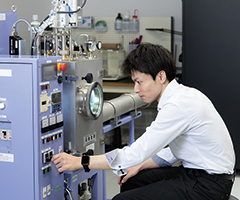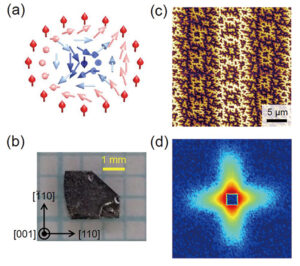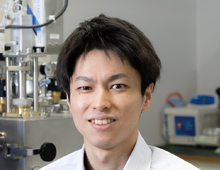
Our unit aims to develop new magnetic materials with topological functions and high-performance magnetic functions based on materials synthesis. We will develop novel intermetallic compounds and alloys using singe crystal growth and rapid quenching methods, and elucidate their magnetic structures and topological properties through various measurement techniques such as magnetometry, scanning probe microscopy, and neutron scattering.
Development of new room-temperature antiskyrmion materials and observation of magnetic domain structures
Skyrmions are vortex-like topological spin textures and anticipated to be used for spintronics devices. Antiskyrmions are anti-vortex topological spin textures with topological numbers of opposite sign to those of skyrmions. While antiskyrmions have been expected to form in magnets with D2d or S4 symmetry, they have only been observed in Heusler alloys with D2d symmetry. We discovered a new material (Fe,Ni,Pd)3P as a host of antiskyrmions above room temperature. Furthermore, we revealed anisotropic fractal magnetic domain structures in bulk crystals using magnetic force microscopy and small-angle neutron scattering.

(a) Schematic spin texture of an antiskyrmion. (b) Single crystal of (Fe,Ni,Pd)3P. (c) Magnetic force microscopy image of fractal magnetic domain texture. (d) Magnetic small-angle neutron scattering pattern.
Reproduced from [Karube et al. (2022). J. Appl. Cryst. 55, 1392-1400] with permission of the International Union of Crystallography




